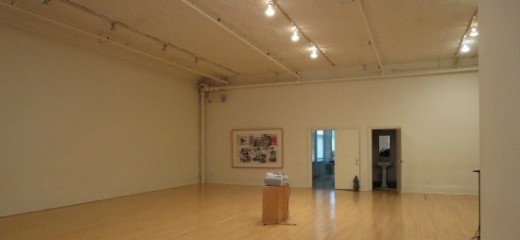
Traces of Trisha: Into the Archive
by Lisa Kraus
I fell in love with Trisha Brown when I was 24 years old and have remained in love ever since. Trisha, who was the first female choreographer to win a MacArthur Fellowship, who made me gasp with her dancing audacity and conceptual brilliance, suffered a series of strokes which led to her retirement. Because I had danced in her company during the making of seminal pieces, because I had restaged some of the works in exciting places (Paris Opera, Venice Biennale), because her work set the standard for me in balancing rigor and play, and because she has always been among the kindest and most decent of geniuses, I wanted to honor her and her work. Trisha Brown: In the New Body, a series of performances, classes, lectures and an exhibition, is the result.
Josh McIlvain, content editor for the project, and I dove into the Trisha Brown Dance Company archives last spring to see what materials might become part of what we share on our website and in our promotional writing. With funding from the Mellon Foundation, the Company has been able to hire two part-time archivists who have beautifully organized photos, videos, notebooks, and ephemera. It looks like this:


We got a thorough orientation to all the materials. To use many of these photos would require seeking permissions from the original photographers or filmmakers, so we have tended to work with images for which the company has those permissions already. A notable exception is the photographer/filmmaker Babette Mangolte; we decided to approach her about screening her films. She recently shot a new version of Brown’s Roof Piece from New York’s High Line and has a newly digitized version of the iconic Watermotor. This solo, which Mangolte shot in 1978, is a primer in “Brownienne motion,” with two versions of the piece, one in real time and one slow-mo. Mangolte was very pleased to have them shown, and they’ll be centerpieces of our film screening October 25.
KevinVast2011_550.jpg)
Photo of Roof Piece by Kevin Vast, 2011
The Loft
Burt Barr, Trisha’s husband, has been extremely generous in letting the curators of the exhibition (Re)framing Collaboration, Matt Feliz and Brian Wallace, borrow materials, selecting them by poking around in flat files, lockers, and standing shelving at the Soho loft Trisha bought in the 70s. That neighborhood, formerly industrial, has been utterly transformed with upscale stores and throngs of shoppers. The art galleries have largely decamped to Chelsea. But artists who pioneered the area are still living there, and the wide columnless lofts that were such a draw for dancers then remain their residences and studios.
Here is how the space looks:





Here is Trisha in the loft in 2008 in front of a silkscreen featuring images of her and her company by her friend and collaborator Robert Rauschenberg (she called him Bob). . Photo by Lourdes Delgado. Details from the silkscreen are below.



Most days when I would come into the loft to rehearse, Trisha would be lying on a wrestling mat, using these balls underneath varied parts of her body to ease out tension and get ready for dancing. The “ballwork” was something the late Elaine Summers, her neighbor and friend, had propagated, and most all of us in the company would traipse over to the one shop on the Lower East Side that carried these old fashioned rubber balls to purchase our own. The paint on Trisha’s is nearly rubbed off with use. I wonder if some of her personal magic has rubbed into them. They feel the most personal and totemic of any of the objects in the collection.
Now that I have had a glimpse into how Trisha’s materials are cared for, I have questions about archiving, about curating memory. How is history written? What remains after an artist’s working life is complete? Who are the caretakers of legacy? Resetting Trisha’s work, I have often thought of these questions in relation to the dances themselves, but they are central also for all the traces the dance artist leaves behind. The movement and its material manifestations weave together to tell the fullest story.
The full calendar of Trisha Brown: In the New Body events is here.
Photos are by Lisa Kraus except where noted.
* This photo was printed originally in the book Dance Ink Photographs, copyright Dance Ink/2wice Arts Foundation, used with permission of Patsy Tarr.
By Lisa Kraus
October 11, 2015










